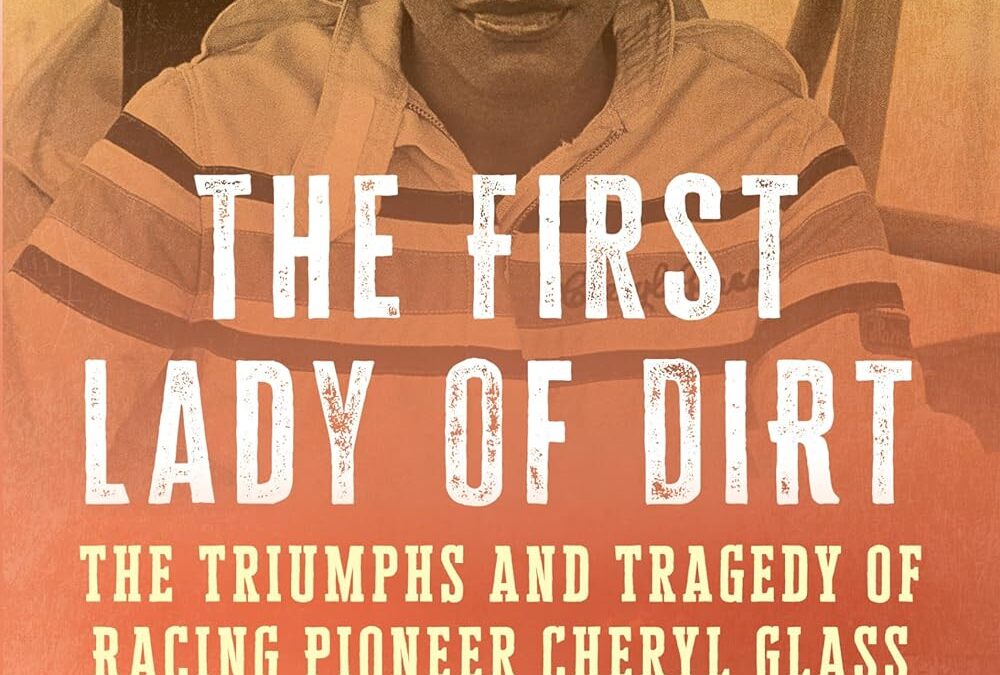
The incredible, little-known story of the first successful Black woman in the sport of auto racing in the United States.
Early in her career, Cheryl Glass looked like a lock to become the first Black woman to compete in the Indianapolis 500. From racing quarter midget cars at ten years old to Indy Lights in her twenties, Cheryl was on her way towards a winning career in auto racing.
In The First Lady of Dirt: The Triumphs and Tragedy of Racing Pioneer Cheryl Glass, Bill Poehler tells Cheryl’s full story for the first time. He recounts how Cheryl rapidly became the first successful Black woman in the sport, yet frequently encountered racist and sexist taunts from other drivers and fans throughout her career. While appearing to have it all—talent, ambition, looks—she faced many challenges on and off the track and her life soon spun out of control.
Featuring exclusive interviews with Cheryl’s mother, friends, and competitors, The First Lady of Dirt takes you behind the scenes and in the driver’s seat of Cheryl’s life. Poehler, an amateur racer himself, places the reader at the track, smelling the dirt and fumes, hearing the roaring engines and crashing metal, and feeling Cheryl’s joy and pain. It’s the inspiring story of a racing pioneer and a tragic tale of the pressures that are often hidden from public view until it’s too late.
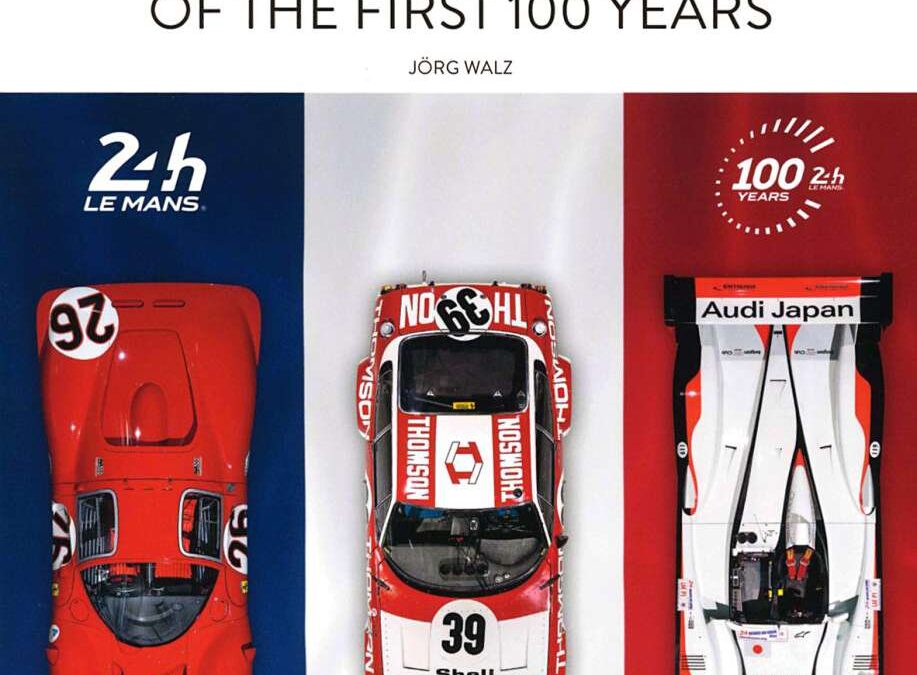
The 24 Hours of Le Mans is the most famous car race in the world, and the venue has long since established itself as the Mecca of the sports car scene. Numerous brands established their sporting reputation here. A selection of the impressive racing cars is on display at the national car museum The Loh Collection in a special exhibition to mark the 100th anniversary of Le Mans. Jörg Walz has used this collection to describe “highlights”. The race, the people behind the successes (and failures) and the many different vehicles provide plenty of material for exciting and interesting stories. This book tells some of them and traces the lively history of this event steeped in tradition
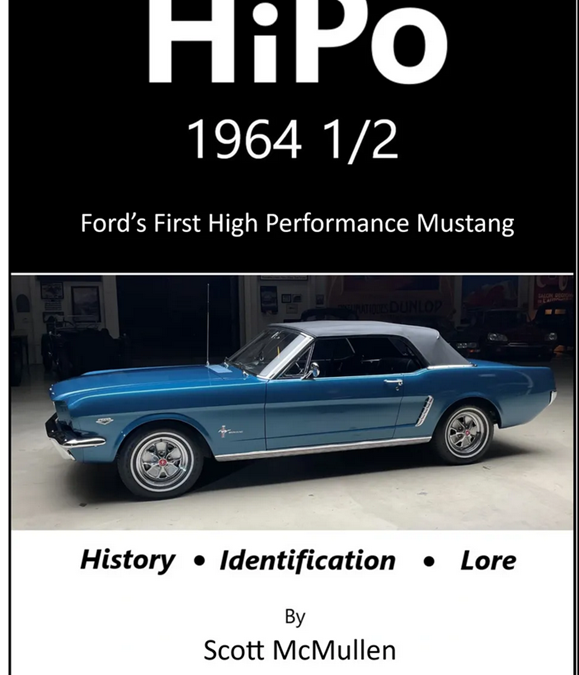
Introducing “HiPo 1964 1/2 Ford’s First High Performance Mustang – History, Identification, Lore”. Dive into the thrilling world of Ford’s iconic 64 1/2 K code Mustang with captivating stories and stunning visuals. A must-have for every auto enthusiast!
The authoritative guide to Ford’s original street legal race-bred Mustang and one of the world’s rarest collector cars, whose fascinating story is sure to entertain a wide range of automotive enthusiasts – not just Mustang fans – covering history, early prototypes, development/testing, production, characteristics/parts, restoration/preservation, and much more. (Hardcover, 347 pages, 157 photos/images both color and black & white.) By Scott McMullen with foreword by Jay Leno.
“HiPo 1964 ½ Ford’s First High Performance Mustang” focuses on one of Ford’s rarest production cars – rarer than the 1965-1966 Shelby GT 350 and the only option for Mustang performance buffs prior to August 1964. Also known as HiPos or K codes, most enthusiasts are aware of the 65-66 models, but little about the 64 ½ HiPo Mustangs, has been available. The 64 ½ cars were the original embodiment of the street legal race-bred Mustang. Their fascinating story is sure to entertain a wide range of automotive enthusiasts – not just Mustang fans.
The book includes rare, and in some cases, never-before-published pictures of early High Performance Mustang prototypes and pre K code mustangs production cars. Included are details of experimentation and production along with in-depth discussions of how research and development progressed through the start of 64 ½ K code production up to the start of 65 production. Also explored is the lore of these classic muscle cars and the test drivers, like Dan Gurney, who helped wring them out.
This information is invaluable to the collector and automotive performance enthusiast alike. Even the most knowledgeable Mustang aficionado will find new information, some of which will challenge old notions and lore that has been told through generations of Mustang fans the world over. The book goes on to present tips for preserving and restoring a 64 ½ HiPo Mustang. It further delves into characteristics of an authentic 64 ½ K code Mustang along with how they changed through the few weeks in 1964 that these ultra rare cars were produced.
Hardcover, 347 pages, 157 photos/images both color and black&white.
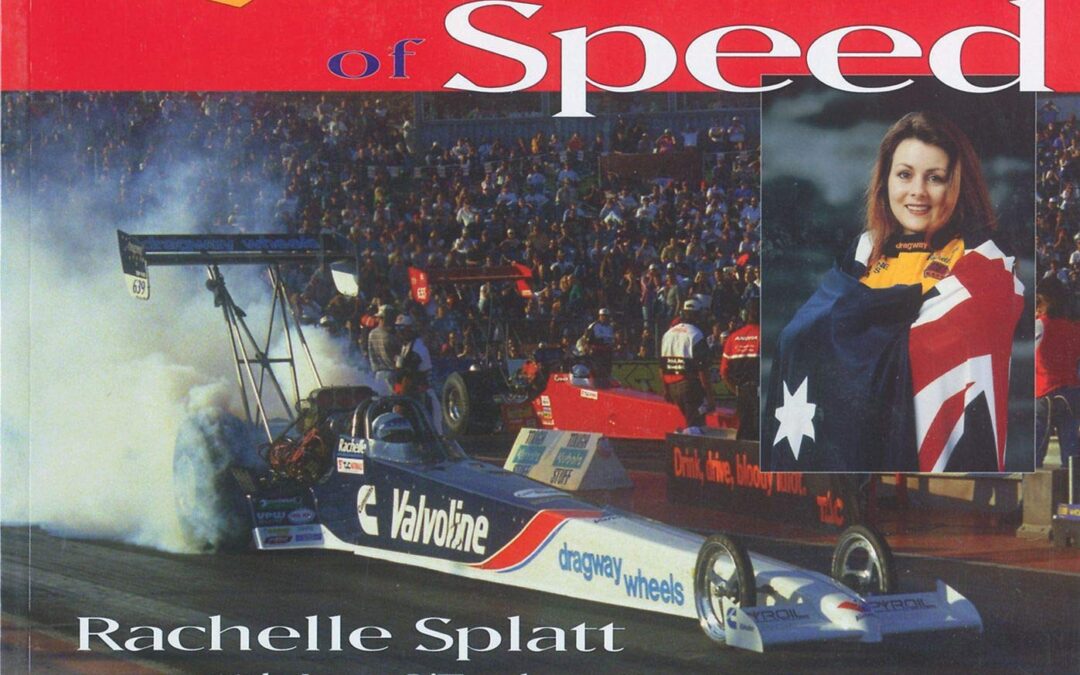
It takes guts, skill and an unshakeable belief in yourself to nudge up to the line in a 5000 horsepower beast that will propel you over a quarter mile in less that 5 seconds at 300 mph.
Welcome to the world of top fuel drag racing and the most successful woman in the sport, Rachelle Splatt, The Queen of Speed.
Rachelle Splatt’s passion for speed has taken her to success at the highest level of her sport. A consummate professional at her chosen sport and career, she has won the ANDRA crowning glory, the Nationals. When given the chance to compete in the United States she raced on the NHRA circuit and became the first women in the world to exceed 300 mph in 1994.

On 2 August 1990, Saddam Hussein’s armed forces invaded and occupied Kuwait. A swift international response followed, which, led by the United States and the United Kingdom, saw the formation of a coalition that formed the largest military alliance seen since the end of the Second World War.
Among the many RAF units deployed under Operation Granby, the codename given to the British military operations during the conflict, was 41 Squadron, with elements taken from 54 Squadron and 226 OCU, which was equipped with the ubiquitous Jaguar GR1 single-seat all-weather tactical strike and ground-attack fighter. In late 1990, the squadron duly despatched a total of twelve aircraft, which soon became known for their distinctive desert pink camouflage, and twenty-two pilots from their base at RAF Coltishall.
Initially conducting low-level strikes, for which the Jaguar Force had always been intended, over the weeks that followed 41 Squadron switched to more unusual medium-level missions. In total, the men and machines of 41 Squadron conducted a total of 617 sorties during Operation Granby.
To complete this remarkable description of 41 Squadron’s part in the liberation of Kuwait, the author has interviewed a number of these pilots. As well as these veterans’ personal reflections, Danny Burt also explores the Jaguars’ record on air-to-ground combat and its performance in theatre, the various upgrades the type receive, and the unique nose art that each aircraft carried. Many of the pictures in this highly illustrated publication have never been published before.
The story is completed by the recovery by the author of one of the Jaguar GR1s flown in the Gulf War Rescued from an Army range in South Wales, the aircraft was moved to RAF Coningsby where its restoration, including the return of its Operation Granby camouflage, is underway.
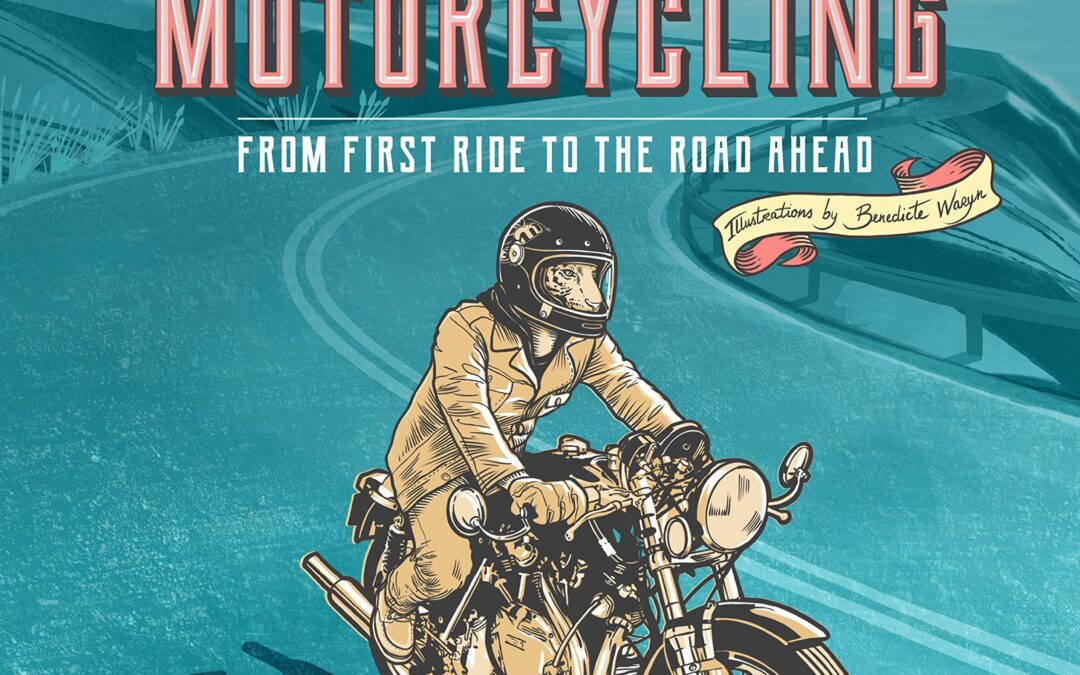
Do You Dream of Riding a Motorcycle?
The Craft and Art of Motorcycling will help make your dream a reality—from your first ride to the road ahead.
Hollywood’s go-to riding guru, Steve Krugman, has trained thousands of riders including high-profile actors, musicians, and athletes. The Craft and Art of Motorcycling is based on his years of experience developing unique, effective, and proven riding methods.
In clear, relaxed language, Krugman offers complete understanding of the bike itself and riding fundamentals (the Craft), with concepts, strategies, and insights that lead to mastery on the road (the Art).
Key topics include:
- Motorcycle controls and operation
- Fundamental skills—starting, stopping, shifting, and turning
- Real-world cornering technique
- Low-speed control and emergency maneuvers
- Street- and road-riding strategies
- Managing riding conditions and the elements
- Selecting gear and buying your first bike
The Craft and Art of Motorcycling is an accessible and comprehensive introduction to motorcycle and scooter riding—simply explained and beautifully illustrated throughout—and provides an essential foundation for any rider, whether an aspiring novice, rusty returnee, or weathered road-veteran.
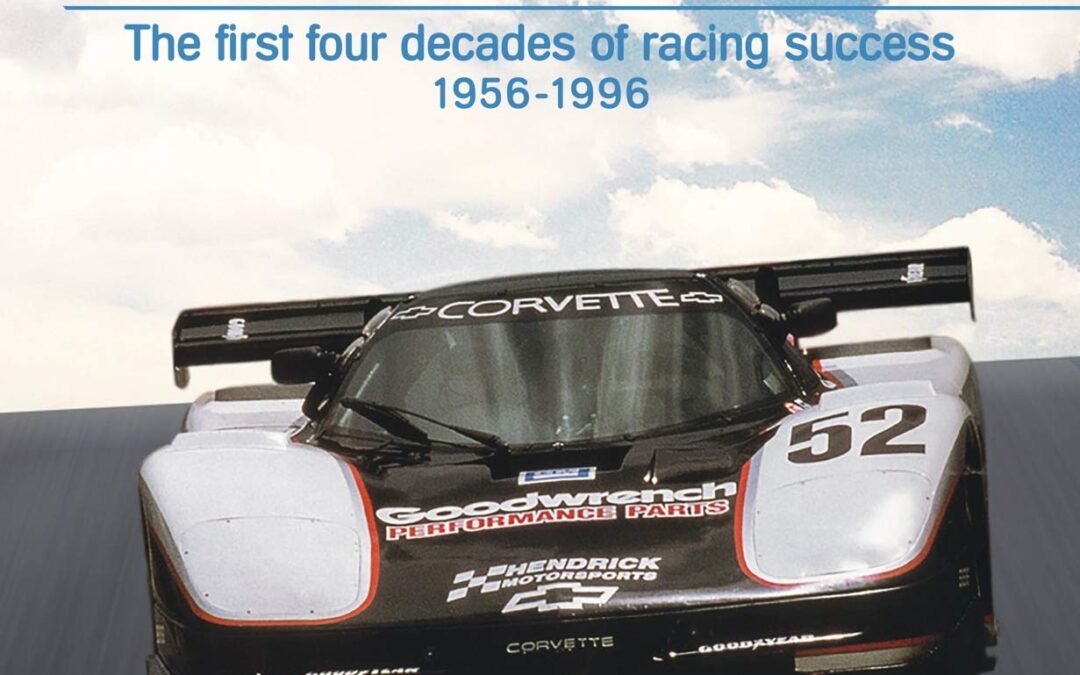
This revised reprint of a classic title covers the history and development of the racing Corvettes, from the car’s beginnings in the 1950s with just 250 horsepower, through the Corvette GTP of the 1980s, with over 1000 horsepower, and on to 1996, when 4th generation cars give way to the 5th generation.
Included are many interviews with the drivers who raced these exciting, weighty and always fast cars, including John Greenwood, Dick Gulstrand, Jerry Grant and ‘Fast’ Phil Curring, amongst others. The book is illustrated with many quality photographs, supplied by General Motors and well-known motoring photographers; it also contains detailed specifications of the production cars, and road test reports

Stock-car racing star, country singer, and sports broadcaster Kyle Petty shares his familial legacy, intertwined with NASCAR’s founding and history, in Swerve or Die―written with Pulitzer Prize-winner Ellis Henican, the New York Times bestselling coauthor of In the Blink of an Eye.
“Born into racing royalty. The only son of NASCAR’s winningest driver ever. The grandson of one of the sport’s true pioneers. The nephew of our very first Hall of Fame engine builder. It’s quite a family to represent, and through it all, I’ve somehow managed to keep being Kyle.”
Kyle Petty won his very first stock-car race, the Daytona ARCA 200, in 1979 when he was eighteen. Hailed as a third-generation professional NASCAR racer, he became an instant celebrity in circles he had been around all his young life. Despite being the grandson and son of racing champions Lee Petty and Richard Petty, Kyle didn’t inherit innate talent. Working in his family’s North Carolina race shop from an early age, he learned all about car mechanics and maintenance long before he got behind the wheel. And although Kyle continued the family business, driving “Petty blue” colored cars emblazoned with his grandfather’s #42―a number once used by Marty Robbins―his career took a different route than his forebears’.
In Swerve or Die: Life at My Speed in the First Family of NASCAR Racing, Kyle chronicles his life on and off the racetrack, presenting his insider’s perspective of growing up throughout the sport’s popular rise in American culture. In between driving and running Petty Enterprises for thirty years, Kyle took some detours into country music, voiced Cal Weathers in Pixar’s Cars 3, and started his annual motorcycle Kyle Petty Charity Ride Across America. And when his nineteen-year-old son Adam, a fourth-generation racing Petty, tragically lost his life on the track, Kyle founded Victory Junction, a camp for children with chronic and serious medical conditions in Adam’s name―with help from Academy Award-winning actor and motorsports enthusiast Paul Newman.
Filled with NASCAR history, stories of his family’s careers, and anecdotes about some of stock-car racing’s most famous drivers, Kyle’s memoir also tackles the sport’s evolution, discussing how welcoming diverse racers, improving car and track safety features, and integrating green technology will benefit NASCAR’s competitors and fans in the future.
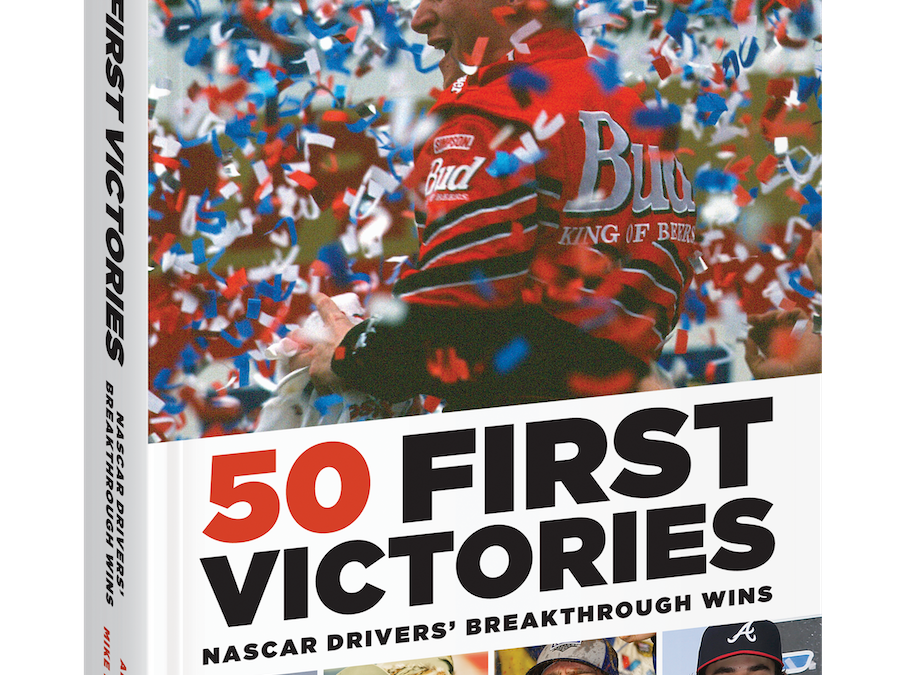
Did you know that Richard Petty’s first win was overturned due to a protest . . . by his dad? That Ned Jarrett won his first race in a car he bought with a bad check, banking on the winnings to pay it off? That Mario Andretti defied team orders to bag his first NASCAR win? That Tiny Lund nabbed his first NASCAR victory because he rescued a fellow driver from a fiery wreck?
All this and more comes to light in 50 First Victories, which chronicles the journey of NASCAR’s best as they drive their way to that landmark first victory. You’ll read about Richard Petty at Charlotte, Dale Earnhardt Sr. at Bristol, Jimmie Johnson at Fontana, Chase Elliott at Watkins Glen, and more.
Journalists Al Pearce and Mike Hembree have been along for the ride for much of NASCAR’s long history. With a combined ninety years of coverage of one of America’s grassroots sports, they bring a wealth of knowledge and experience to the stories of these fast-and-furious heroes, drivers who ran to the ragged edge—and often past it—in pursuit of the checkered flag.
Here are all the sport’s stars—Richard Petty, Dale Earnhardt Sr., Dale Earnhardt Jr., Cale Yarborough, Darrell Waltrip, Jeff Gordon, David Pearson, Jimmie Johnson, Junior Johnson—and the inside stories of their success. Strap in for a rollicking ride to victory lane!

When international Grand Prix motor racing resumed following World War Two, the red cars of Italy were the dominant force, and Alfa Romeo, Ferrari and Maserati swept all before them. Patriotic industrialist Tony Vandervell – founder of bearing manufacturer Vandervell Products Ltd – resolved to break their stranglehold over the sport with a team of British cars and pursued his ambition with single-minded devotion and determination.
Deploying all of the engineering expertise and industrial might at his disposal, Vandervell achieved his goal in 1957, when the Vanwall of Tony Brooks and Stirling Moss won the British Grand Prix at Aintree. By the end of 1958, Vanwall had won a total of nine World Championship Grands Prix and claimed that year’s inaugural Constructors’ Championship, building the foundation for the considerable success that would subsequently be enjoyed by British-built Formula One cars.
First published in 1975, this book offers a unique insight into Tony Vandervell and the rise of his Grand Prix team and has been extensively expanded for this new edition from Porter Press International with the inclusion of hundreds of official factory documents from the GP Library archive – from telegrams and letters to lap charts and technical records. With a superb collection of period photographs and detailed captions written by Doug Nye, the result is the definitive history of this ground-breaking British Formula One team.

The Lotus Elite was a turning point for Lotus. First produced at the end of the 1950s, it marked Lotus’ transition from a maker of small racing cars, which had limited utility on the road, to the producer of a highly sophisticated road and race car. In the Elite, Lotus exploited its knowledge of new technology and racing pedigree to produce a car which, with its glass fibre monocoque and Coventry Climax engine, had the potential to be a world beater.
This book gives an insight into the reasons the car was produced and its importance in Lotus’ history, especially in the production of lightweight innovative cars. Through interviews with Elite owners, first hand accounts provide a good overview of owning one of these iconic cars, covering its foibles and quirks as well as its exemplary roadholding, handling and performance. Illustrated with many colour photographs, along with period advertising material, the book provides a valuable insight into owning, running and racing these iconic cars.

When the Myasishchev design bureau was reborn in 1951, it was immediately tasked with creating a high-speed strategic bomber to balance the threat posed by NATO’s heavy bombers, notably the B-52. Designated M-4 and code-named “Bison” by NATO, the new four-turbojet bomber was developed within an incredibly short time—just one year. It made use of many innovative features, including a bicycle landing gear, and was designed around the most powerful jet engine of the day. It became the progenitor of a small family of bombers and refueling tankers, including the much-improved 3M and its versions. Many of the intended versions never materialized, and the Bison had its share of problems, but it came at just the right time, providing a valuable nuclear deterrent, and remained in service for 40 years until retired in compliance with the START treaty. The book charts the first Soviet strategic jet bomber’s development and operational history. It includes the story of how the 3M was adapted to carry components of the Energiya/Buran space transport system as the VM-T Atlant outsized-cargo transporter.

FULL CIRCLE: A Hands-on Affair with the First Ferrari 250 GTO may be the first car memoir – a car revered for its international racing performance and artistic mystique – the first Ferrari 250 GTO, born in Italy in 1962.
It is also the memoir of a man, himself unique – Larry Perkins, a rocket scientist /car racer /artist. His stories chronicle how The Car (a.k.a. “Sophia” named for the elegant Italian bombshell Sophia Loren) pops in and out of his life. These events, and the people associated with them, create a series of full circles in their shared journey.
Full Circle: the past becomes future becomes past, illuminating words to the famous song… “When Everything Old is New Again”.
While Larry was working on the Apollo program to land a man on the moon, and later the Viking Mars Lander program and other space missions, Sophia and Larry had an on-again off-again relationship – an “affair” so to speak – for over 50 years. They found each other in 1963 and formed a surprising dynamic of man-machine synergy. Life was fast and furious, fun and full of trophies. When it seemed destined to be over, Larry sold the Ferrari in 1966 for a mere $3600. The racing duo lost track but were re-united and then parted again. Finally … unbelievably … Sophia found Larry when they were both a little older. With the spark alive, their racing history was re-born in a most spectacular way. Each was transformed by the other.
The memoir starts with a man searching for the perfect race car and develops into a previously unrecorded history of s/n #3223 GT with racing tales. Larry and his wife, Petra, tell of an irresistible GTO attraction and adventures during the exciting era of ’60s sports car racing. (Petra first saw the Ferrari at a memorable race with a fiery crash at Sebring, Florida, when she was 15, but did not meet its driver for 15 more years.)
The authors show the exhilaration of key races and an anecdotal chronology of #3223 with photos, some never seen. They examine what a race driver is really like, the attributes of a highly competitive personality, and the unrelenting dedication to Winning. After all, it was not easy for a small privateer – someone who had started racing relatively late in life (with a consuming day job) – to compete with the likes of racing champions Phil Hill, Pedro Rodriquez, Mario Andretti, and Dan Gurney.
The book emphasizes the value of teamwork. “Doing the impossible” – in racing or rocketry – demands the best of humans working together to render perfect machines. This is an intimate account about the people who made The Car what it ultimately became.
How did this car acquire its timeless aura of mystique?
How cool is it to drive such a powerful and exquisite piece of machinery?
To what degree can a car be considered fine art?
What happened to Larry and why did it turn out to be so spectacular, almost eclipsing his early successes in racing the GTO? When and Where did all this happen?
And best of all, Who are the passionate people that made it happen?
Full Circle: A Hands-On Affair with the First Ferrari 250 GTO answers these questions and provides readers with a thrilling personal play-by-play of racing the very first Ferrari GTO for the very first time.

Revealed to the world in 1948, the Land-Rover not only revived the Rover Company’s fortunes in an austerity-riddled post-war period, but galvanised its future thanks to the model’s almost immediate success.

This concise history is the first book in a new series on the Soviet space program and features many rare photographs, diagrams, and charts. When Soviet rocket experts examined the first Nazi V-2s in early 1945, they immediately realized that their own technology was years behind what the Germans had developed. The dropping of the two American atomic bombs on Hiroshima and Nagasaki in August 1945 made the path forward clear: the development of a Soviet atomic bomb, and a suitable missile to carry it. This story begins with the Soviet’s pre- and early war developments in rocket technology, then covers the discovery and study of the V-2s at Peenemünde, Germany. The Soviets assembled remaining V-2 rockets from existing parts and their mode of operation was studied. Developments in the Soviet R and G series missiles in the early 1950s are discussed in detail, as is the development for the peaceful use of Soviet rocket technology in space.
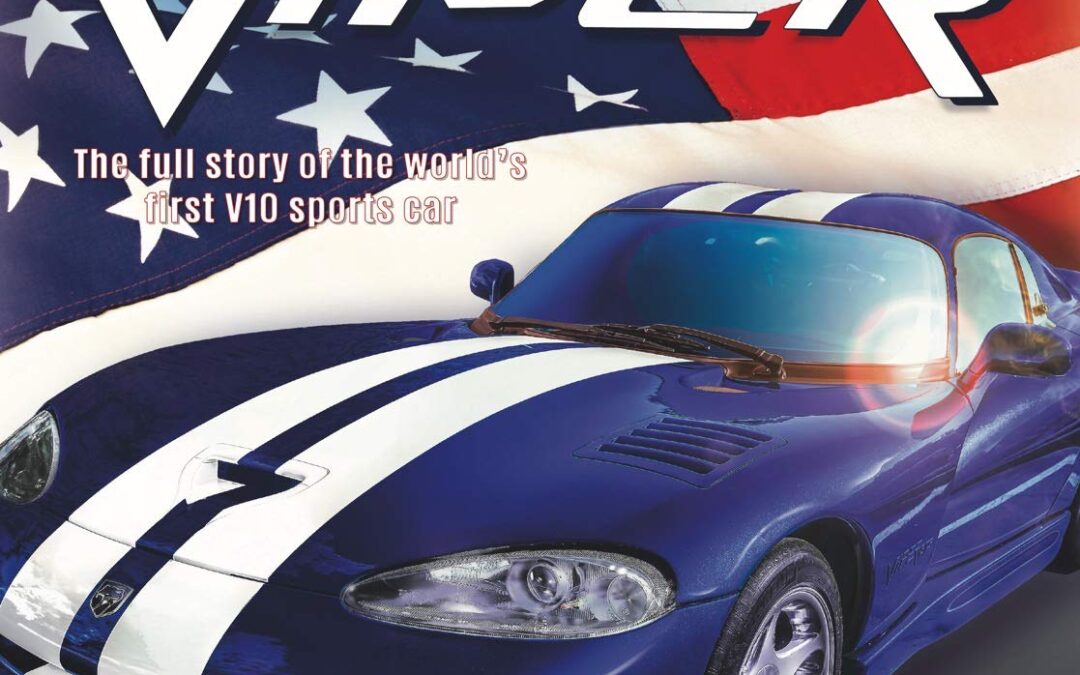
The Viper stunned Americans by showing that Dodge, whose cars were all front-wheel drive (and mostly powered by four-cylinder engines), could make a raw, brutal, V-10-powered car that could run with the best. Team Viper went a step further at Le Mans, proving that an American car could handle turns, too – so well that it won its class, repeatedly, at a fraction of the cost of the cars it beat. Dodge Viper covers the transition from a concept to a rough and brutal rocket to a world-class supercar, and includes every generation. The story also tells of the rough times when the entire Viper business could have been sold to the highest bidder, and considers alternative paths the 2013-17 Viper might have taken.
This is not just a gushing tribute to the Dodge Viper, the author provides an objective view of the full story, using business, historical, and enthusiast perspectives. The book looks at the business case for each generation, the development stories and their outcomes, and describes some of the issues owners may have to watch out for, particularly in the early models.
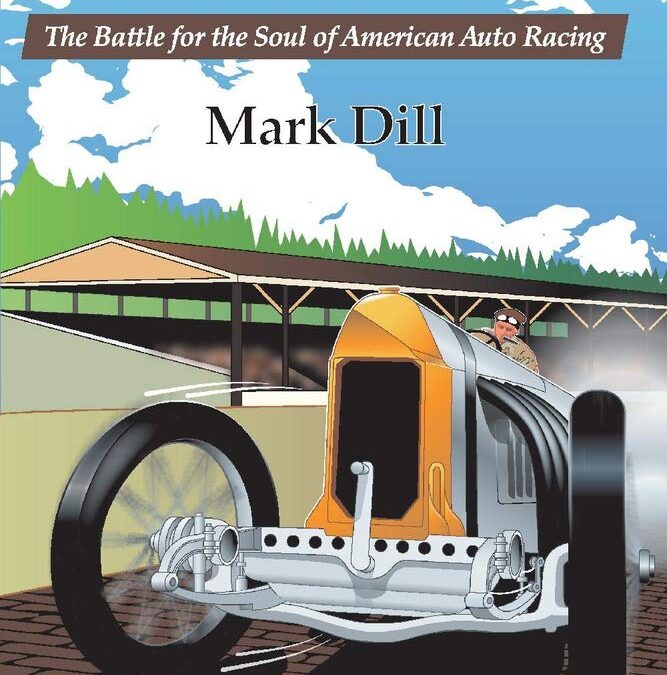
Barney Oldfield riveted his eyes into one of the 3.2 million bricks that paved America’s First Super Speedway. He sought to blot out the din of a packed grandstand and the dangerous gusts that could sweep his car into the unforgiving concrete wall. A record run could restore his reputation as America’s Speed King or cost him his life. A record run could deliver the telling blow in the raging culture war for the soul of American auto racing. Oldfield has the fastest car in the world, and now he must prove himself as America’s champion and ensure the success of his friend Carl Fisher’s titanic battle to raise the modern Indianapolis Motor Speedway up from a fallow cornfield. It’s May 1910 and you have a front-row seat.
The Legend of the First Super Speedway thrusts you into the early 20th century with vivid interpretations of auto racing and what it would be like to walk among the people and grasp their world view. You will meet the rugged characters of the era as they get “corned” on whiskey, chew “chaw,” and bounce violently as they scorch the bricks of America’s first speedway. You will ride with them on trains, bound across the craggy terrain of road races, and step over dead horses rotting in the street. The world convulsed with technological change, and the winners mastered it.
Everything unfolds through the eyes of protagonists Barney Oldfield and Carl Fisher as they grapple with a cultural battle for the soul of American auto racing. Most importantly, early auto racing’s good, bad, and ugly are put before you in an unvarnished fashion. Why? Because it really happened. No storyteller needs to dramatize a single detail because the amazing events actually took place and the awe-inspiring people behind them walked the Earth just as you do now.

Racing Classic Motorcycles is the story of a classic motorcycle racer who was fortunate enough to be able to ride many of the best machines from the period, at the highest level, and on many of the most famous road racing courses in the world.
There are tales of success, friendships, and the loss of racing pals. Machine preparation and mechanical failures feature heavily, and the story recounts the author’s frustrations and joys. Andy Reynolds maintained and built many of the bikes he raced, and ultimately retired from riding to become both a machine scrutineer and a sponsor. All aspects of motorcycle racing are covered in the author’s easy-to-read and entertaining narrative, and it is a fascinating read for any motorcycle enthusiast. Come into the world of Classic Racing Motorcycles – but bring your cheque book and medical insurance!

2nd Edition
This officially licensed 120th anniversary edition of Indian Motorcycle tells the complete story of Indian Motorcycle, America’s first mass-produced motorcycle maker, from its start as a bicycle manufacturer to the purchase of the brand by Polaris Industries in 2011 and the subsequent new Indian motorcycles—updated to include new photography, the story of the latest models, including the FTR1200, Chieftain, Challenger, and Roadmaster, and Indian Motorcycle’s return to racing.
In the early years of the 20th century, Indian Motorcycle dominated the world’s racetracks and showrooms, earning the brand a worldwide reputation for quality, performance, reliability, and technical innovation with such classic machines as the Chief, Scout and Four. But the once-mighty company fell on hard times and in 1953 was forced to file bankruptcy.
The Indian Motorcycle brand never quite died, however, thanks in large part to fanatically devoted enthusiasts, who tried to resurrect it for over half a century. Finally, Polaris, maker of the highly regarded Victory brand of motorcycles, purchased the brand and released the Chief and Scout, models that once again restored Indian Motorcycle to its rightful place in the motorcycle pantheon.
Indian Motorcycle is the most complete and up-to-date history of this classic American motorcycle.
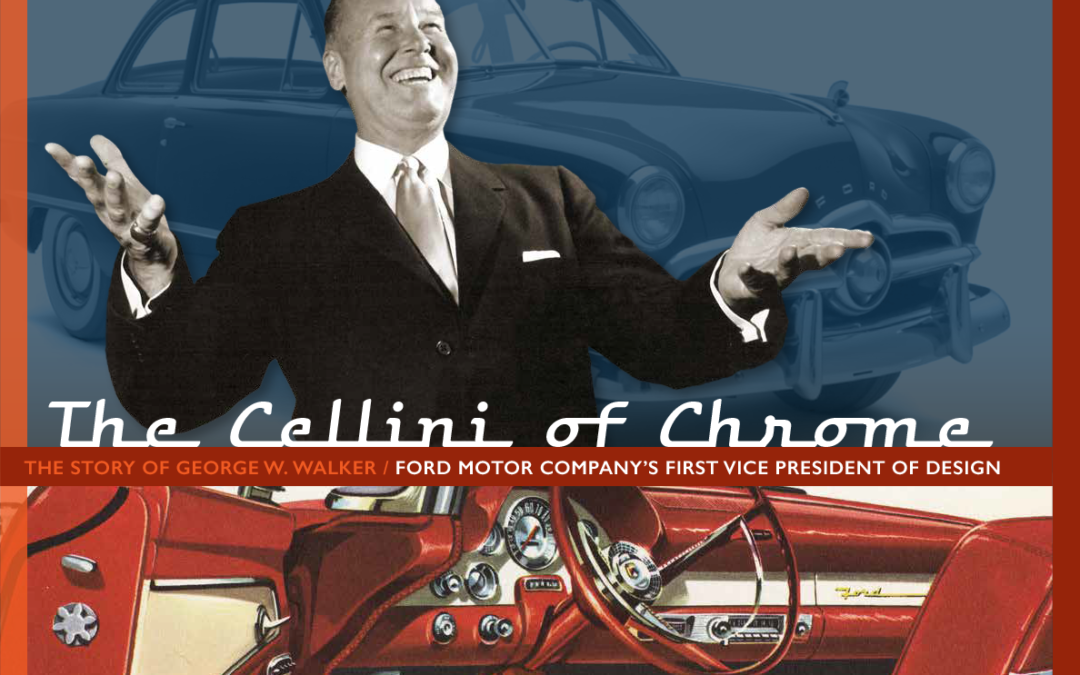
Henry Dominguez’s newest book The Cellini of Chrome, introduces the surprisingly unknown but truly fascinating career of George Walker, the Ford Company’s first full Vice President of Styling.
In the same flamboyant vein as other design greats such as Harley Earl, Gordon Buerig, Vergil Exner, Raymond Loewy and William “Bill” Mitchell, Walker developed the standard for key Ford Motor Company Products for the 1950s and ‘60’s. Beginning with the enormous success of the 1949 Ford, George became the catalyst for the iconic appearance of Ford, Mercury and Lincoln models, elevating Henry’s company to one of the all-around best-selling Automotive operations in the World.
With a personal history anything but bland, his elegant style of dress, appeal to attractive women, signature winning smile, and willingness go toe to toe with industry giants such as Henry Ford II (“The Deuce”) and other top executives, Walker made himself a key figure in the highly competitive environment of mid-20th Century automotive design.
His story is a must for any automotive enthusiast looking for an inside view of how the stylistic character of Ford products was created by Walker and his associates.






















